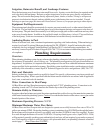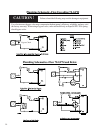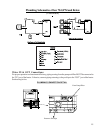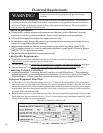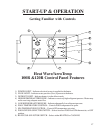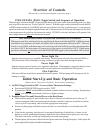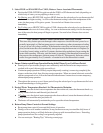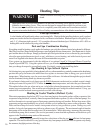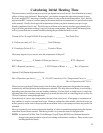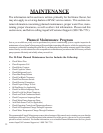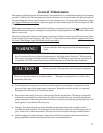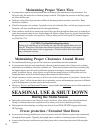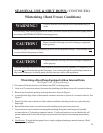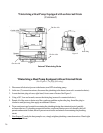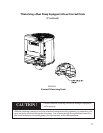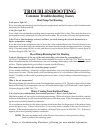21
Calculating Initial Heating Time
The time it takes to initially warm your pool or spa depends on several factors. First determine how many
gallons of water are to be heated. Knowing this, you can then compute the equivalent pounds of water
involved, and the BTU's necessary to heat the volume of water to the desired temperature. Next, find the
approximate BTU output of your heat pump at the current ambient air temperature (see specifications table
in this manual). Finally, decide upon the temperature at which you plan to maintain your pool or spa.
Sounds complicated, but it's not! The following work sheet can be used to calculate approximately how
long it will take your heater to bring your pool or spa up to temperature. Keep in mind that heating times
will vary somewhat due to weather conditions during the period that the heater is in use.
Volume of Pool (Length X Width X Average Depth) = _________ Pool Cubic Feet
X Gallons per cubic ft.(7.5) = _________ Pool Gallonage
X Pounds per Gallon (8.3) = _________ Pounds of Water
How many degrees do you want to raise the temperature of the pool?
# of Degrees _________ X Pounds of Water (per above) = __________ BTU’s Required
BTU’s Required (per above) ________ $
BTU Output of Heater = ______ Hrs. of Operation
Optional Cold Weather Adjustment Factor:
Hrs. of Operation (per above) ______ X 1.25 (60º F outside air (O.A.) Temperature Factor) = ______
Hrs. of Operation at 60º F O.A.
When you start your AquaCal heat pump for the first time, the heat pump must be permitted to operate,
continuously, until the desired water temperature is attained. This may take several hours, to several days,
depending upon the time of the year and weather conditions. If a time clock or similar device controls the
operating time of the circulator pump, temporarily override the time clock or controlling device to allow for
24-hour, continuous water pump operation.
Once the body of water is up to temperature, the time clock can be reset. A heat pump is a maintainer of
heat, and thus is sized to overcome heat losses. However, during the colder months, when heat losses are
at their greatest, and in order to keep up with increased heat losses, water pump run times may need to be
extended.
Since air is generally at its warmest during the daytime, it is best to operate heat pumps during the daytime
when there is more heat to transfer. Whenever possible, set system run times for daylight hours.
NOTE: An optional Call Flex Time Clock Manager (AquaCal part #0030S) can eliminate the need to
change water pump run times as heat losses change with weather conditions. Please contact your
installing dealer for details.



